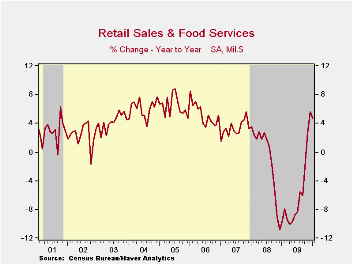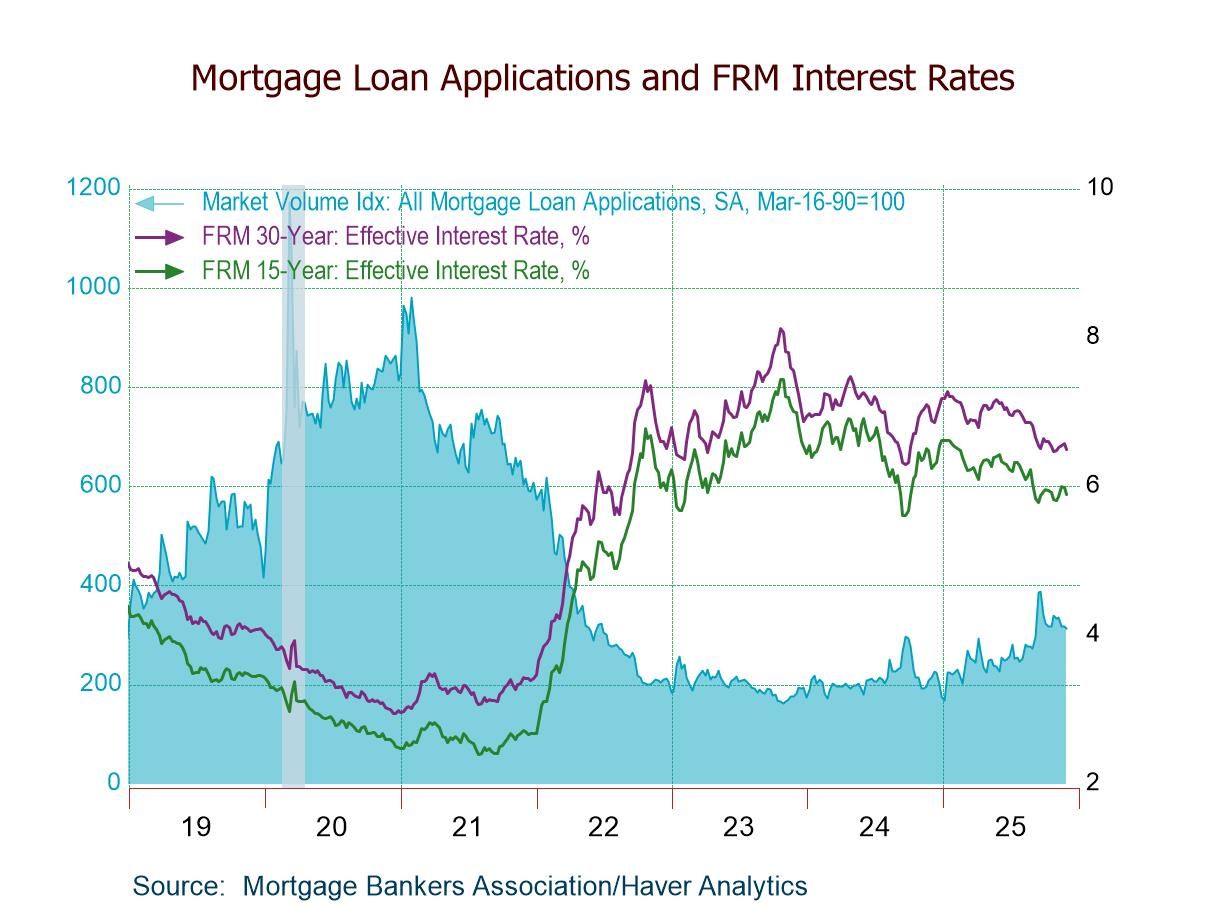 Global| Feb 12 2010
Global| Feb 12 2010U.S. Retail Sales Recover From Yearend Blues
by:Tom Moeller
|in:Economy in Brief
Summary
Shoppers are returning to stores after restraining spending at yearend. January retail sales increased 0.5% after a 0.1% decline during December which was less than reported initially. The latest figure was firmer than Consensus [...]
 Shoppers are
returning to stores after restraining spending at yearend. January
retail sales increased 0.5% after a 0.1% decline during December which
was less than reported initially. The latest figure was firmer than
Consensus expectations for a 0.3% rise. Moreover, the rebound had
nothing to do with shopping for a motor vehicle. Retail sales less
autos rose 0.6% after a 0.2% slip in December that was slightly less
than reported last month. As apparent in earlier figures, the trend in
retail spending has improved. On a three-month basis retail sales rose
at a 9.7% annual rate through January versus the 15.8% rate of decline
one year ago. Less autos, spending growth also recovered on a
three-month basis to 10.1% from -17.9% one year ago.
Shoppers are
returning to stores after restraining spending at yearend. January
retail sales increased 0.5% after a 0.1% decline during December which
was less than reported initially. The latest figure was firmer than
Consensus expectations for a 0.3% rise. Moreover, the rebound had
nothing to do with shopping for a motor vehicle. Retail sales less
autos rose 0.6% after a 0.2% slip in December that was slightly less
than reported last month. As apparent in earlier figures, the trend in
retail spending has improved. On a three-month basis retail sales rose
at a 9.7% annual rate through January versus the 15.8% rate of decline
one year ago. Less autos, spending growth also recovered on a
three-month basis to 10.1% from -17.9% one year ago.
Internet & catalogue sales continued strong. They posted a 1.6% rise in January (12.4% y/y) following similarly strong increases during the prior four months. The three-month rate of gain rose to 28.5% from -9.7% one year ago.
"Core" discretionary spending also improved as general merchandise store sales rose 1.5% (3.2% y/y) and recovered a 1.1% December decline. Sales of electronics & appliances were strong as well and posted a 1.2% gain but remained down 7.0% from last January. Earlier weakness in clothing & accessory stores also stabilized and rose 0.3%, however, price discounting left the y/y gain at just 0.3%. Furniture & home furnishing store sales have yet to recover much. A 1.4% January decline (-4.4% y/y) left the three-month annualized growth rate at a negative 1.3%. That was, however, improved from -21.6% at its worst.
Motor vehicle sales were unchanged last month (5.5% y/y) but that was better than the 4.2% m/m decline in unit sales. Higher gasoline prices played a part in the retail sales picture. Gasoline purchases, however, ticked up just 0.4% (29.0% y/y) even though prices rose 4.0% (50.5% y/y). Sales of building materials fell 1.2% (-6.3% y/y).
The retail sales data are available in Haver's USECON database.


| January | December | November | Y/Y | 2009 | 2008 | 2007 | |
|---|---|---|---|---|---|---|---|
| Total Retail Sales & Food Services (%) | 0.5 | -0.1 | 2.0 | 4.7 | -6.0 | -0.8 | 3.3 |
| Excluding Autos | 0.6 | -0.2 | 2.0 | 4.6 | -4.7 | 2.4 | 3.9 |
| Non-Auto Less Gasoline | 0.6 | -0.3 | 1.1 | 2.0 | -1.9 | 1.6 | 3.6 |
Tom Moeller
AuthorMore in Author Profile »Prior to joining Haver Analytics in 2000, Mr. Moeller worked as the Economist at Chancellor Capital Management from 1985 to 1999. There, he developed comprehensive economic forecasts and interpreted economic data for equity and fixed income portfolio managers. Also at Chancellor, Mr. Moeller worked as an equity analyst and was responsible for researching and rating companies in the economically sensitive automobile and housing industries for investment in Chancellor’s equity portfolio. Prior to joining Chancellor, Mr. Moeller was an Economist at Citibank from 1979 to 1984. He also analyzed pricing behavior in the metals industry for the Council on Wage and Price Stability in Washington, D.C. In 1999, Mr. Moeller received the award for most accurate forecast from the Forecasters' Club of New York. From 1990 to 1992 he was President of the New York Association for Business Economists. Mr. Moeller earned an M.B.A. in Finance from Fordham University, where he graduated in 1987. He holds a Bachelor of Arts in Economics from George Washington University.






